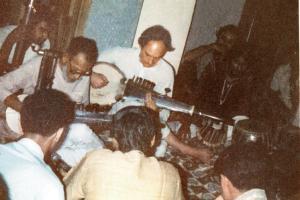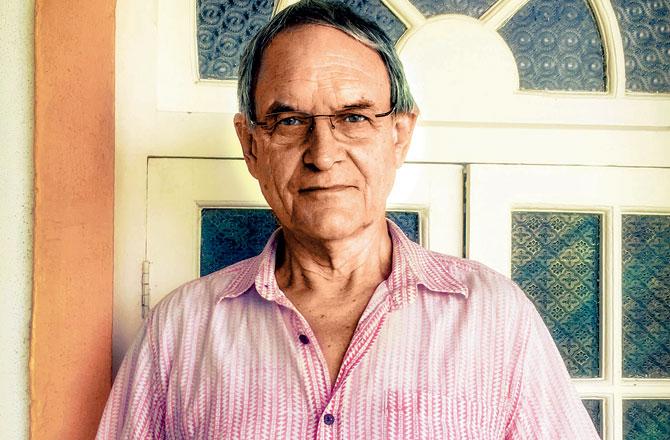Australian artiste Jonathan Barlow will open a recital with a conversation on the stringed instrument

A photograph from 1980 when Radhika Babu Maitra (left) made Barlow play with him at a small mehfil in Calcutta
Take us back to your journey to India five decades ago; what drew you to Hindustani classical music at the time?
Sound drew me to classical Hindustani music, especially the sound of [sarod virtuoso] Ali Akbar Khan, which I first heard in 1963 in Sydney. It went deeper into the body and mind than anything else. I was not especially musical and certainly not talented, but I had to go deeper and try for myself. Having visited as a tourist in 1963, I returned to India in 1968 and took some lessons in Maihar [in Madhya Pradesh, known as the birthplace of Maihar Gharana].
 Jonathan Barlow
Jonathan Barlow
You embarked on the path of learning the sarod by crafting your own instrument. How did it help you hone your musicality?
I made my first instrument simply by gluing a long neck onto the belly of an old mandolin and attaching a steel plate and skin. Pretty rough, but it enabled me to find fingerings, etc. Later in London in 1969, I made a proper instrument from a log of elm using primitive tools and it turned out quite well. Mimicking the sound of Ali Akbar Khansaheb was my laboratory. Later, I learnt quite systematically from Radhika Mohan Maitra for a long time but because of laziness on one hand and some kind of blind spot, or deaf spot, I was unable to practise in such a way that these two sources fused in a voice of my own. Radhika Babu introduced me to Bimala Prasad Chatterjee, who taught me some processes for voice, which I am still practising and trying to bring into my neglected sarod baaj [playing style].
The theme of your conversation in Mumbai is a fascinating one.
The sarod was designed for and evolved within the parameters of Hindustani music through the 19th century. It doesn't migrate easily to other [traditions of] music. Most of its potential has been revealed by the great master sarodiahs [sarod players]. However, contemporary performers are refining and expanding techniques and ideas and there are a number of very good players. Nowadays, some design and functional elements have been improved but the finesse of manufacturing of the old makers is not often matched. There is a rethinking going on that may have great results soon.
On October 27, 5 pm to 9.30 pm
At G5A Foundation for Contemporary Culture, Mahalaxmi.
Log on to bookmyshow.com
Entry Rs 500
Catch up on all the latest Mumbai news, crime news, current affairs, and also a complete guide on Mumbai from food to things to do and events across the city here. Also download the new mid-day Android and iOS apps to get latest updates
 Subscribe today by clicking the link and stay updated with the latest news!" Click here!
Subscribe today by clicking the link and stay updated with the latest news!" Click here!







_d.png)



